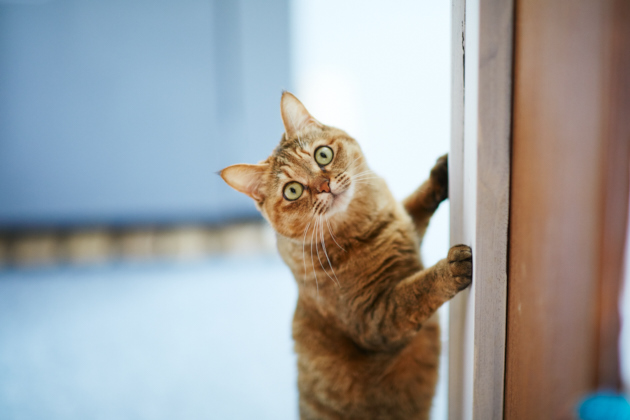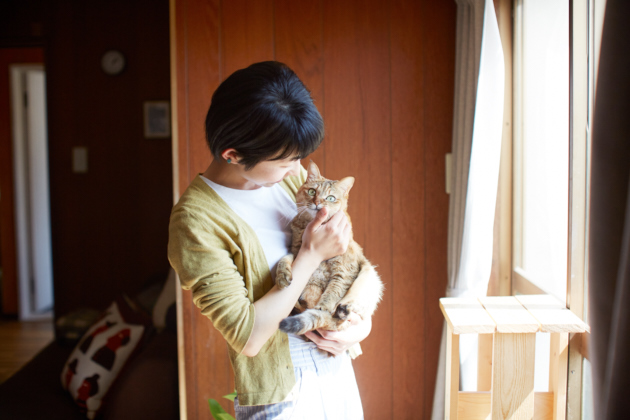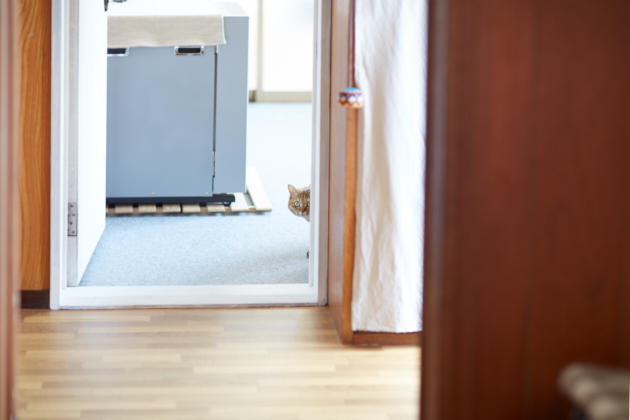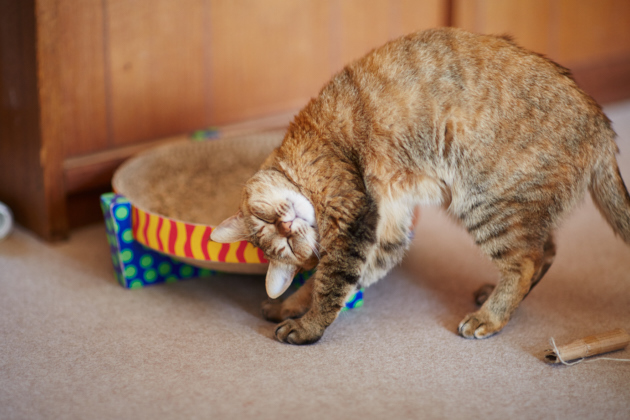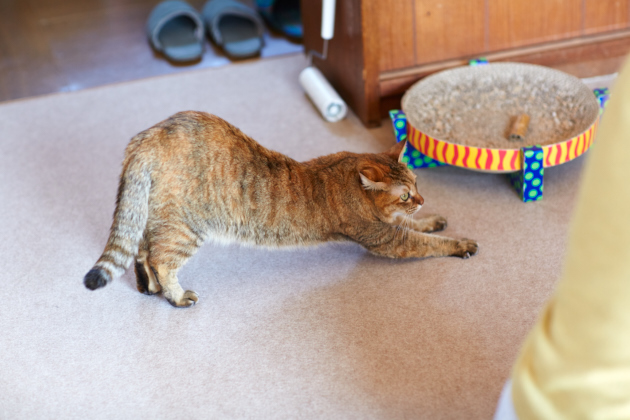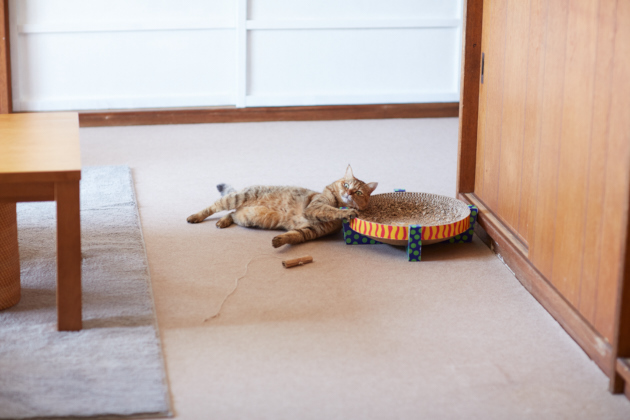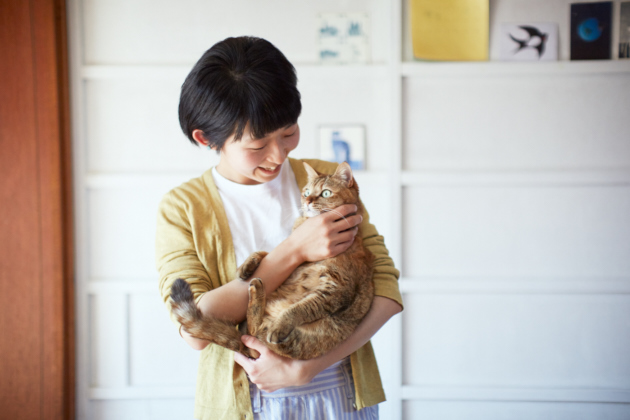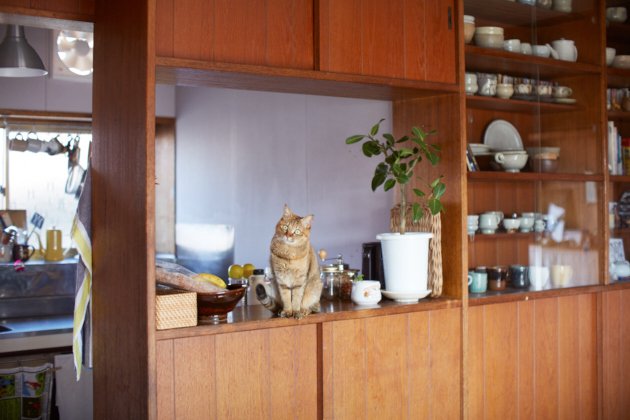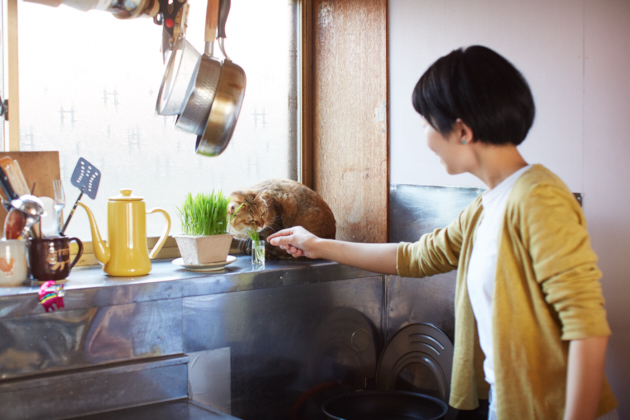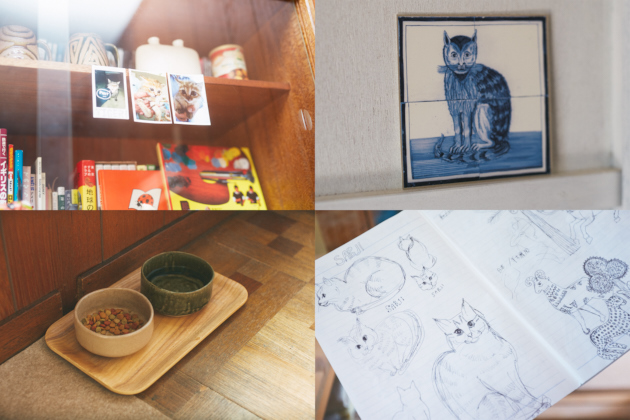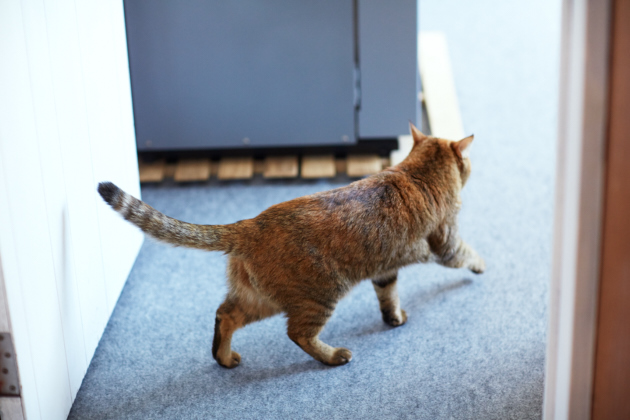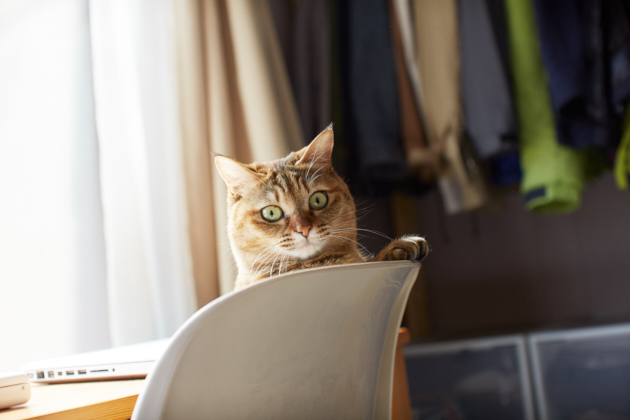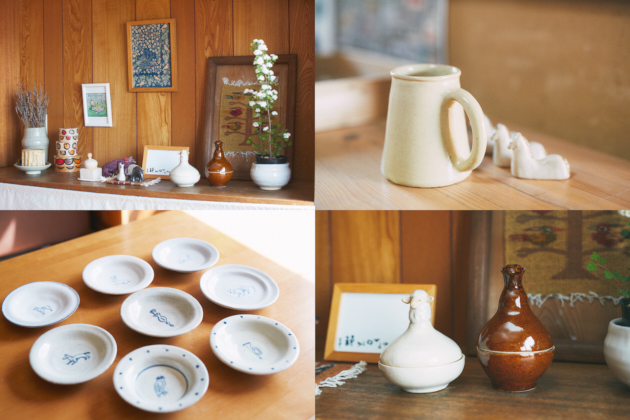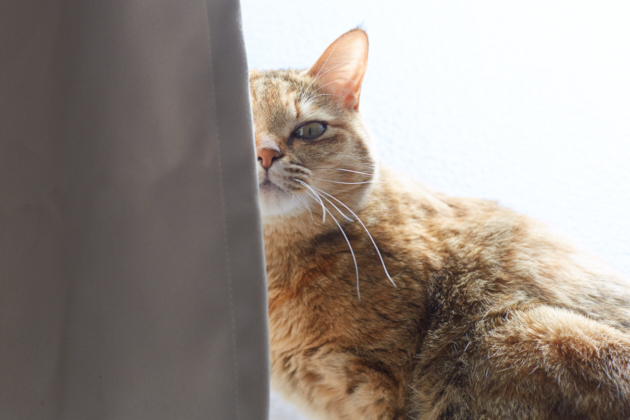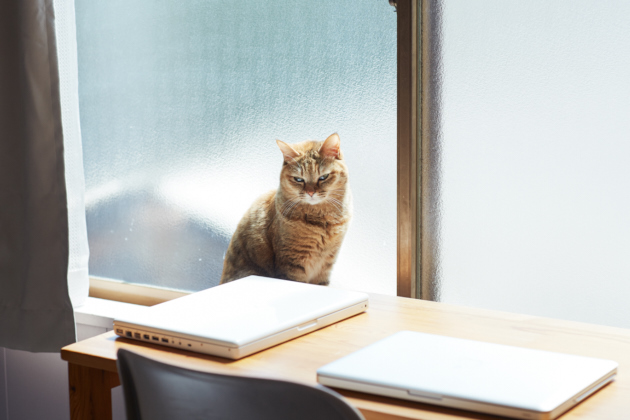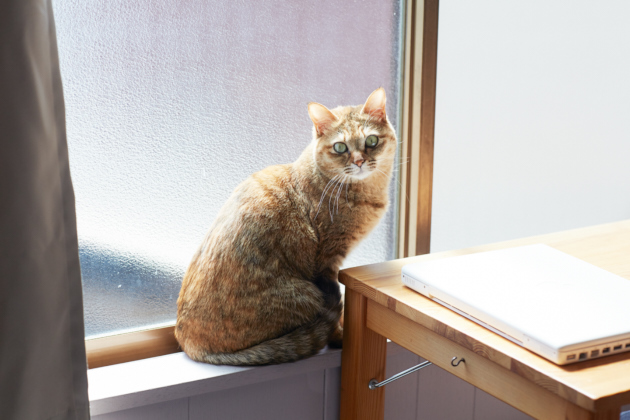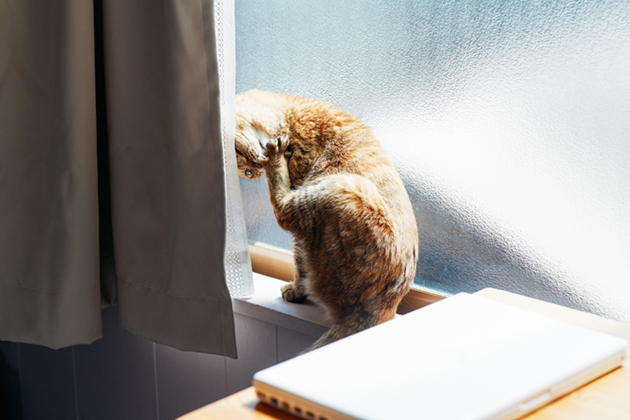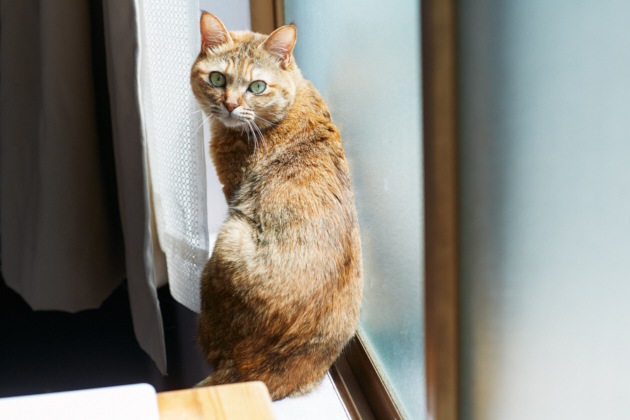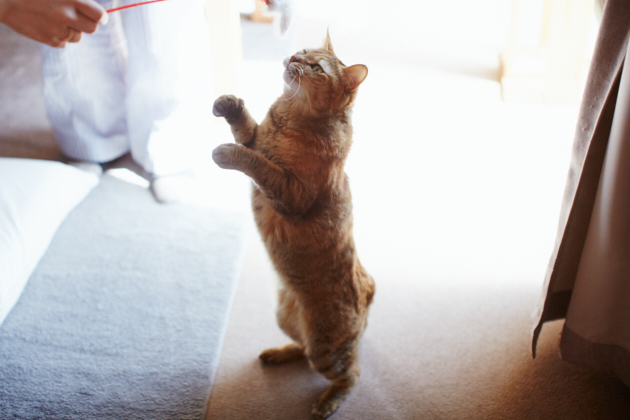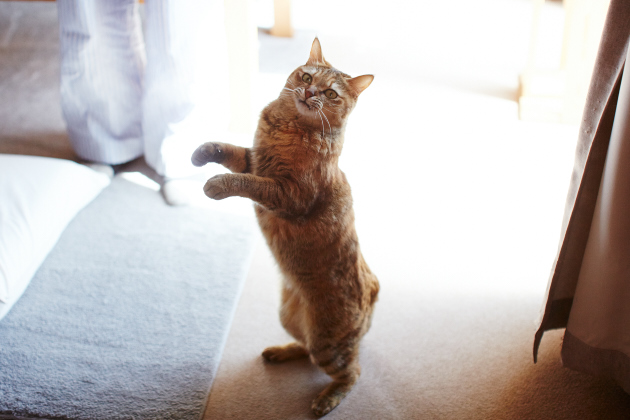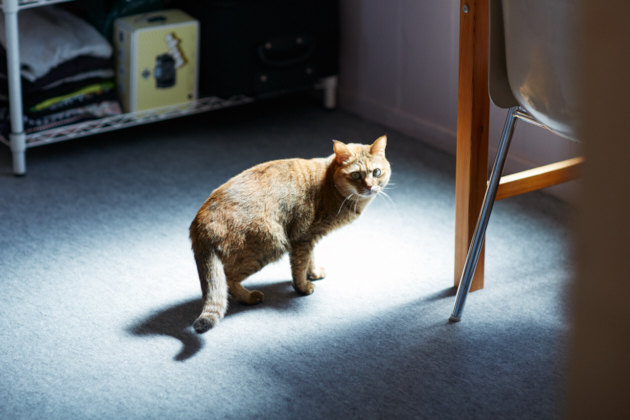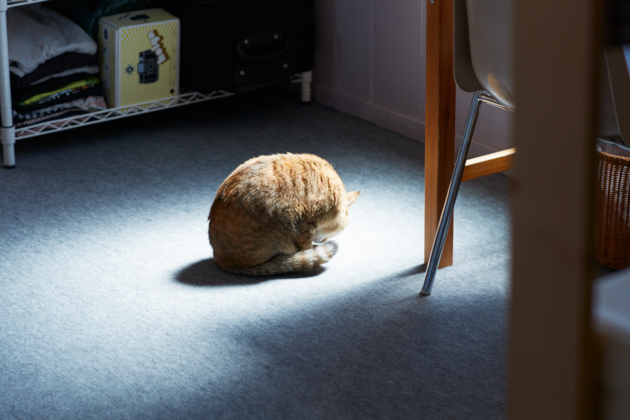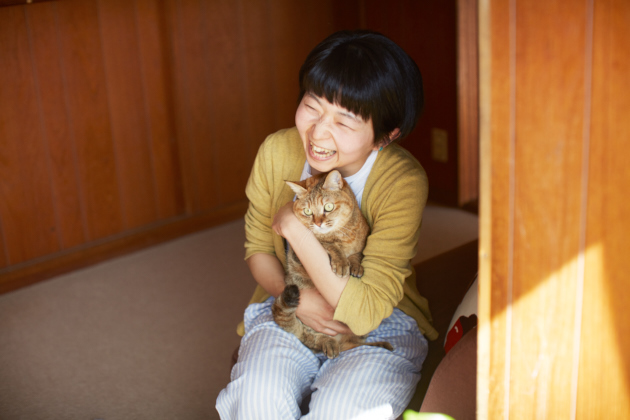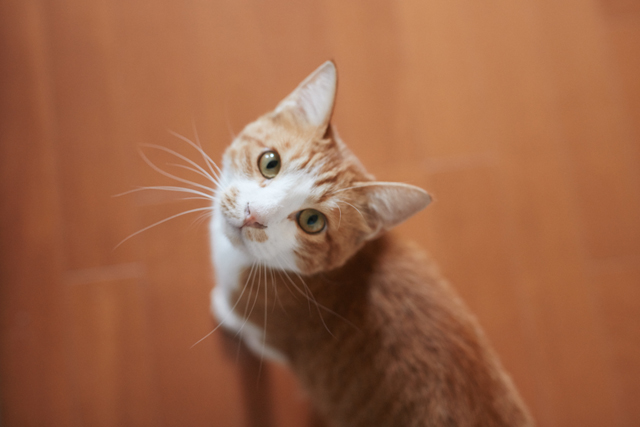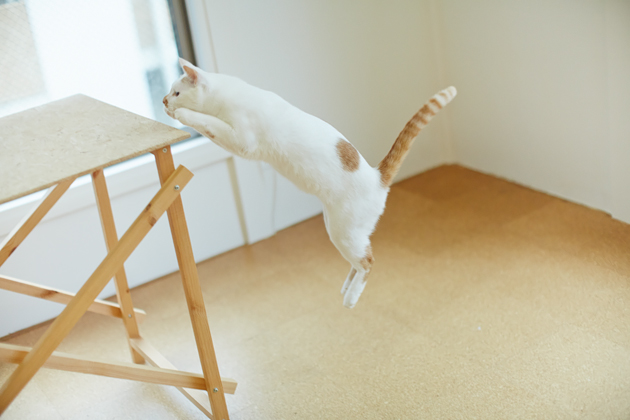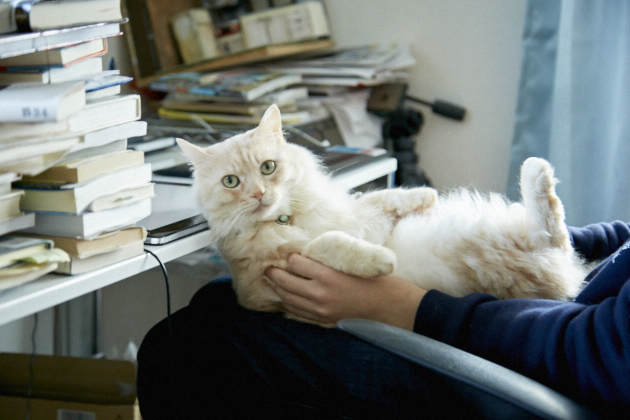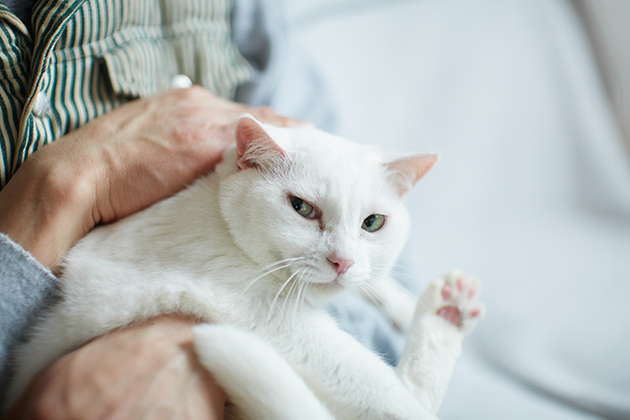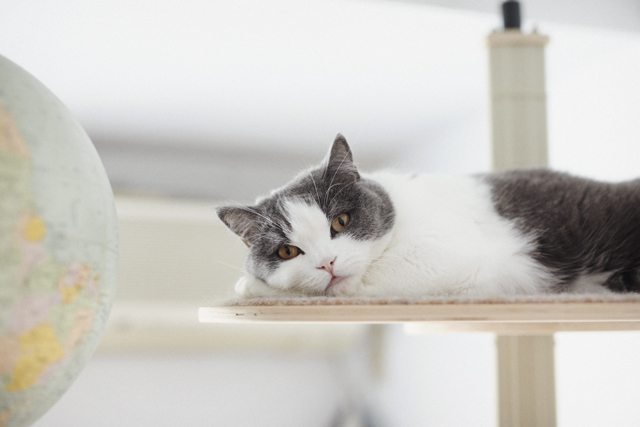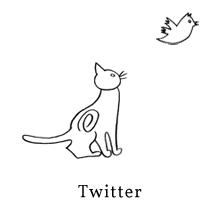Ceramic Artist Ritsuko Imai resides in Mashiko of Tochigi Prefecture, where she currently lives alongside a 3-year old female cat named Sabzi. Having grown up surrounded by cats and other animals, encountering Sabzi was kind of a wish come true for Imai. Friendly and cowardly at the same time, Sabzi showed us her expressive side while playing with her favorite toy.
A Cat Named ‘Vegetable’
- How did you first encounter Sabzi?
“I’ve always wanted a cat of my own. I took her in from an animal shelter in Tochigi in May of 2012. She was about 2-months old then, so she is now about 3-years old. She’s a pretty relaxed kitty.”
- Had you ever taken care of a cat before?
“When I was growing up back at home, we had cats, dogs and birds. And then when I started living by myself, I brought Fuyuta, a turtle I’ve had since junior high. But I couldn’t give up the idea of having a cat. So we eventually found this place, which happens to be in a very old building. But we renovated it ourselves and were finally ready to welcome a cat.”
- Was it love-at-first-sight with Sabzi?
“No, there was actually a line of people waiting to pick up their new pets at the shelter, and they are paired up with animals in the order they applied. Since I was way down at the bottom of the waiting list on standby, I was last in the line. That said, all the pets my family had when I was growing up made it to us through destiny – either they were abandoned or we received them from people we knew. So I knew there was no real way to choose one cat over another – even if I did have my pick. When my turn did come, there were only two cats left. Because Sab-chan was climbing on top of the cage and being quite frisky, I picked her.”
- Where did you get the name ‘Sabzi’?
“It means ‘vegetable’ in Bhutanese. One of the reasons is that my partner, who I live with, is a vegetarian. And there’s a vegetable market called Sabzi Bazaar in Bhutan. This name gave me the impression that the word ‘sabzi’ is loved by many people – so I decided to name her after this happy impression.”
- Have you made any new discoveries since you started living with her?
“I was surprised to find out that she’s such a cuddler. The cat we had back home was very moody, so this was completely new to me. She loves people and even follows me all over the place. Even when I’m taking a bath, she’ll wait for me just outside of the door. Just unbearably cute.” (laughs)
- Can you tell us about her character?
“She’ll occasionally misbehave - like pull some Kleenex out of a box, but overall she’s very friendly. But in truth, she is such a coward. She’s afraid of the outdoors - so even if I keep the door open, she won’t run out. I guess she’s naughty but kind of a chicken. And she replies to me when I talk to her, so I sense that she understands words, or knows how to communicate.”
- That’s very different from turtles, isn’t it?
“Turtles are turtles. And yes, I do love the way they look. I guess that reptiles are also pretty hard to take care of. That green turtle was a small gift from my friend, who was merely trying to cheer me up when I was distressed about something or other back during junior high school days. For ten-odd years since then, I’ve changed his water everyday and supported him through winter hibernation. So he grew up to be this big. It may not be as obvious as it is with the cat, but he also turns his head toward me when I talk to him.”
- So, you think Sabzi understands words?
“She probably does. When I ask her if she wants to play, her eyes will start shinning. I also think she understands the word ‘kari’ (dried cat food).”
Life in the Pottery Town of Mashiko
- So you were taking part in the Mashiko Pottery Fair (held in May and October every year) up until just last week?
“Fortunately, I pretty much sold out because so many people came by. The festival used to only sell b-class products – the stuff that commercial potteries and artists couldn’t wholesale. But nowadays, many artists come to sell their stuff, not just from Mashiko but also from Aichi and Kyoto. It’s like there are different exhibitions going on in each tent. You can enjoy the festival just by looking around. The Pottery Fair was in fact the reason I moved to Mashiko.”
- What made you aspire to become a potter to begin with?
“Though I majored in pottery at college, it was obvious that only a handful of us would be able to become professional ceramic artists. So I applied for other jobs just like any other college grad. I was offered jobs at a publishing house and at a variety store in Tokyo. However, around the same time I realized that I wasn’t cut out for regular day jobs, I found an advertisement for a pottery training school run by Tochigi Prefecture. The tuition was cheap and I was able to get 2 years of training. So I quit my day job and went back to school. After graduating, I started participating in the Pottery Fair and one thing led to another. Eventually, I was making a living as a ceramic artist. ”
- Your work has somewhat of an old European-like feel to it - with pots decorated with unique female figures or realistic animal faces on brooches and painted dishes. What’s the source of your inspiration?
“I studied in Britain for a year when I was in college. Learning pottery there was an eye-opening experience for me - studying techniques, tools and designs completely different from those of Japan. Have you noticed, for example, that when you see an old religious painting or something similar, among all the people depicted in it, there will be a person with funny face? I love the parts of an artwork that are a little bit strange – the motif of oddity.”
- With the recent boom in ‘Mingei’ and handcrafted goods, the Pottery Market is more popular than ever. However, is it still hard to make a living as an artist?
“Indeed, it is. Most people just want practical things – things that eventually all tend to look the same. So I have to ask myself, ‘how can I differentiate myself from the others?’ I guess at the beginning, my stuff was unique and stood out easily. But I want to make more vessels. It really is a tough world to survive in.”
The Appeal of Animals as Motif
- You’ve created many pieces based on animal motifs, but none featuring cats?
“I find cats very difficult to represent, maybe because I’m too close to them. I’ve tried many times, but I just can’t come up with anything satisfactory. Sab-chan is just way too cute, and there’s no way I can make a form that is cuter than her. When I use animals as my motif, I try to make them cute but not too cute, aiming for the point in-between cuteness and how they actually look in reality.”
- Why are you so attracted to cats?
“It’s probably their charming character - not to mention their beautiful, curvy form. But it’s about more than their beauty. Cats have funny and dumb things about them as well – and that’s what makes them cute. So ‘double-sidedness’ is a cat’s strongest charm, I think. They strike these poses without being conscious of it or having any intent – and it’s really funny. I’d say my days would be much more boring if I didn’t have Sab-chan.”
- How would you describe the relationship between you and Sabzi?
“In terms of how we are always together and the absence of distance between us, she’s like a family member. But since she doesn’t really speak words, I may not understand what she really wants. In that sense, she’s not really a family member. But it’s a very wonderful existence.”
